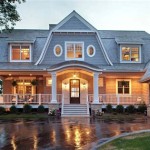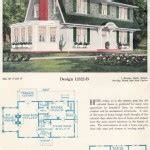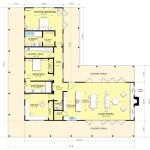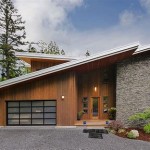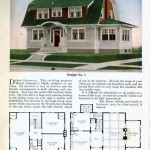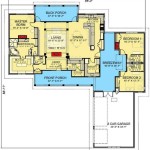A 2-floor house plan is a residential architectural design that allocates the living space of a house across two levels or floors. This type of house plan is often favored for providing ample space for multiple bedrooms, bathrooms, and common areas. Examples of 2-floor house plans include traditional homes with a separate living room, dining room, and kitchen on the first floor, and bedrooms and bathrooms on the second floor.
In many cases, 2-floor house plans also offer practical advantages, such as improved energy efficiency and reduced land usage. The vertical distribution of space in a 2-floor plan allows for better insulation and temperature control, reducing energy consumption. Additionally, building a house with two floors instead of one can save valuable land space, making it an ideal option for urban areas or properties with limited building sites.
In this article, we will delve deeper into the advantages, considerations, and design principles of 2-floor house plans. We will explore the various layouts and configurations that can be achieved, as well as the factors to consider when designing a 2-floor house that meets specific functional and aesthetic requirements.
When planning a 2-floor house, it’s important to consider the following key points:
- Space allocation
- Vertical circulation
- Energy efficiency
- Structural integrity
- Construction costs
- Land usage
- Exterior aesthetics
- Indoor-outdoor connection
By carefully considering these factors, you can create a 2-floor house plan that meets your specific needs and preferences.
Space allocation
Space allocation is a crucial aspect of designing a 2-floor house plan. The goal is to distribute the available space efficiently and functionally to meet the specific needs of the occupants.
The first step in space allocation is to identify the number and types of rooms required. This will depend on the size of the household, their lifestyle, and their preferences. Common areas such as the living room, dining room, and kitchen are typically located on the first floor, while bedrooms and bathrooms are often placed on the second floor.
Once the number and types of rooms have been determined, the next step is to decide on their size and layout. The size of each room will depend on its intended use and the number of people it is expected to accommodate. The layout of the rooms should be designed to maximize space utilization and create a smooth flow of traffic throughout the house.
In addition to the main rooms, it is also important to consider the allocation of space for storage, closets, and other . These areas can be incorporated into the design of the house to ensure that there is sufficient space for all of the occupants’ belongings.
By carefully considering space allocation, you can create a 2-floor house plan that meets your specific needs and preferences. The house will be more comfortable, functional, and enjoyable to live in.
Vertical circulation
Vertical circulation refers to the movement of people and goods between different floors of a building. In a 2-floor house plan, vertical circulation is typically achieved through the use of stairs.
- Staircases
Staircases are the most common form of vertical circulation in 2-floor house plans. They can be located in a variety of places within the house, such as the center, side, or rear. The location of the staircase will depend on the overall layout of the house and the desired traffic flow.
- Elevators
Elevators are another option for vertical circulation in 2-floor house plans. However, they are less common than staircases due to their higher cost and complexity. Elevators are typically only used in larger homes or in homes where there is a need for accessibility for people with disabilities.
- Ramps
Ramps are another option for vertical circulation in 2-floor house plans. They are typically used in homes where there is a need for accessibility for people with disabilities. Ramps can be located either inside or outside the house.
- Other options
In some cases, other options for vertical circulation may be used in 2-floor house plans. These options include spiral staircases, dumbwaiters, and chairlifts. The choice of vertical circulation option will depend on the specific needs of the occupants and the overall design of the house.
Vertical circulation is an important consideration in the design of any 2-floor house plan. By carefully considering the available options, you can create a house that is both functional and accessible for all of its occupants.
Energy efficiency
Energy efficiency is an important consideration in the design of any home, but it is especially important in 2-floor house plans. By incorporating energy-efficient features into your home, you can reduce your energy consumption and save money on your energy bills.
One of the most important aspects of energy efficiency in 2-floor house plans is insulation. Insulation helps to keep your home warm in the winter and cool in the summer, reducing the amount of energy needed to heat and cool your home. There are a variety of different types of insulation available, so it is important to choose the type that is best suited for your climate and your budget.
Another important aspect of energy efficiency in 2-floor house plans is air sealing. Air sealing helps to prevent air from leaking in and out of your home, which can reduce your energy consumption. Air sealing can be achieved by sealing cracks and gaps around windows, doors, and other openings in your home.In addition to insulation and air sealing, there are a number of other energy-efficient features that you can incorporate into your 2-floor house plan. These features include:
- Energy-efficient windows and doors
- Energy-efficient appliances
- Solar panels
- Geothermal heating and cooling systems
- Radiant floor heating
- Smart thermostats
- Energy-efficient lighting
By incorporating these energy-efficient features into your 2-floor house plan, you can reduce your energy consumption and save money on your energy bills.
In addition to saving money on your energy bills, energy-efficient homes are also more comfortable to live in. They are warmer in the winter and cooler in the summer, which can make a big difference in your quality of life.
If you are planning to build a new home, be sure to consider incorporating energy-efficient features into your design. It is a smart investment that will pay off in the long run.
Structural integrity
Structural integrity refers to the ability of a building to withstand the forces that act upon it, such as gravity, wind, and earthquakes. In a 2-floor house plan, structural integrity is especially important because the weight of the second floor must be supported by the structure of the first floor.
There are a number of different factors that contribute to the structural integrity of a 2-floor house plan, including the following:
- Foundation
The foundation is the base of the house and it is responsible for transferring the weight of the house to the ground. A strong foundation is essential for the structural integrity of the house.
- Framing
The framing is the skeleton of the house and it is responsible for supporting the weight of the walls, roof, and floors. The framing must be strong enough to withstand the forces that act upon it.
- Walls
The walls are the exterior and interior partitions of the house. They are responsible for enclosing the space and providing support for the roof and floors.
- Roof
The roof is the top of the house and it is responsible for protecting the house from the elements. The roof must be strong enough to withstand the weight of snow, wind, and rain.
In addition to these factors, the structural integrity of a 2-floor house plan can also be affected by the following:
- Soil conditions
The soil conditions on which the house is built can affect its structural integrity. Soft or unstable soil can cause the foundation to settle, which can lead to structural problems.
- Climate
The climate in which the house is located can also affect its structural integrity. Extreme weather conditions, such as hurricanes and earthquakes, can put a lot of stress on a house’s structure.
- Maintenance
Proper maintenance is essential for the structural integrity of any house. Regular inspections and repairs can help to identify and correct potential problems before they become major issues.
By carefully considering all of these factors, you can design and build a 2-floor house plan that is structurally sound and safe.
Construction costs
The construction costs of a 2-floor house plan can vary depending on a number of factors, including the size of the house, the materials used, the complexity of the design, and the local labor costs. However, there are some general factors that can help you to estimate the construction costs of a 2-floor house plan.
One of the biggest factors that will affect the construction costs of a 2-floor house plan is the size of the house. The larger the house, the more materials and labor will be required to build it. This will result in higher construction costs.
The materials used to build a 2-floor house plan will also affect the construction costs. Some materials, such as brick and stone, are more expensive than others, such as vinyl siding and wood. The more expensive materials you choose, the higher the construction costs will be.
The complexity of the design of a 2-floor house plan will also affect the construction costs. A simple design will be less expensive to build than a complex design. This is because a complex design will require more materials and labor to build.
Finally, the local labor costs will also affect the construction costs of a 2-floor house plan. Labor costs can vary significantly from one area to another. This is why it is important to get quotes from local contractors before you start building your house.
By considering all of these factors, you can get a general idea of the construction costs of a 2-floor house plan. However, it is important to remember that these are just estimates. The actual construction costs may vary depending on the specific circumstances of your project.
Land usage
Land usage is an important consideration for any building project, but it is especially important for 2-floor house plans. This is because 2-floor house plans require more land than single-story house plans. The amount of land required for a 2-floor house plan will depend on the size of the house, the shape of the lot, and the setbacks required by local zoning laws.
One of the advantages of 2-floor house plans is that they can help to save land space. This is because 2-floor house plans allow you to build up instead of out. This can be especially beneficial in urban areas where land is scarce and expensive.
However, it is important to note that 2-floor house plans can also have some disadvantages when it comes to land usage. One disadvantage is that 2-floor house plans can be more difficult to build on sloping lots. This is because the foundation of a 2-floor house must be level, which can require extensive excavation and grading on a sloping lot.
Another disadvantage of 2-floor house plans is that they can be less accessible for people with disabilities. This is because 2-floor house plans require stairs to access the second floor. This can be a challenge for people who have difficulty climbing stairs.
Overall, land usage is an important consideration for any 2-floor house plan. By carefully considering the size of the house, the shape of the lot, and the setbacks required by local zoning laws, you can design a 2-floor house plan that meets your specific needs and preferences.
Exterior aesthetics
Exterior aesthetics is an important consideration for any home, but it is especially important for 2-floor house plans. This is because the exterior of your home is the first thing that people will see, and it will create a lasting impression. There are a number of different factors to consider when designing the exterior of your 2-floor house plan, including the following:
- Architectural style
The architectural style of your home will have a big impact on its overall appearance. There are many different architectural styles to choose from, so it is important to select a style that you love and that fits your personality and lifestyle.
- Materials
The materials you choose for the exterior of your home will also have a big impact on its appearance. There are a variety of different materials to choose from, including brick, stone, siding, and stucco. Each material has its own unique look and feel, so it is important to choose a material that complements the architectural style of your home.
- Colors
The colors you choose for the exterior of your home will also have a big impact on its appearance. It is important to choose colors that you love and that complement each other. You may also want to consider the colors of the surrounding homes when selecting colors for your home.
- Landscaping
The landscaping around your home can also have a big impact on its overall appearance. When planning your landscaping, be sure to consider the architectural style of your home and the materials used in its construction. You may also want to consider adding some outdoor features, such as a patio or deck, to make your home more inviting.
By carefully considering all of these factors, you can create a 2-floor house plan with an exterior that is both beautiful and functional.
Indoor-outdoor connection
An indoor-outdoor connection is a design concept that aims to seamlessly blend the interior and exterior spaces of a home. This can be achieved through the use of large windows and doors, balconies, patios, and decks. An indoor-outdoor connection can provide a number of benefits, including increased natural light, improved ventilation, and a more spacious feel.
In a 2-floor house plan, an indoor-outdoor connection can be especially beneficial. This is because it can help to create a more cohesive and inviting space. For example, a large window in the living room can provide a beautiful view of the backyard, making the space feel more open and airy. A sliding glass door in the dining room can lead to a patio, creating a perfect space for outdoor dining and entertaining.
- Increased natural light
An indoor-outdoor connection can help to increase the amount of natural light in your home. This can make your home feel more inviting and spacious. Natural light has also been shown to have a number of health benefits, including improved mood and increased productivity.
- Improved ventilation
An indoor-outdoor connection can also help to improve ventilation in your home. This is because it allows air to flow more easily between the interior and exterior spaces. Improved ventilation can help to reduce indoor air pollution and make your home more comfortable to live in.
- More spacious feel
An indoor-outdoor connection can help to create a more spacious feel in your home. This is because it blurs the lines between the interior and exterior spaces, making the home feel larger than it actually is.
- Increased curb appeal
An indoor-outdoor connection can also help to increase the curb appeal of your home. This is because it creates a more visually appealing and inviting exterior.
If you are planning to build a 2-floor house, be sure to consider incorporating an indoor-outdoor connection into your design. It is a great way to create a more comfortable, inviting, and beautiful home.










Related Posts

